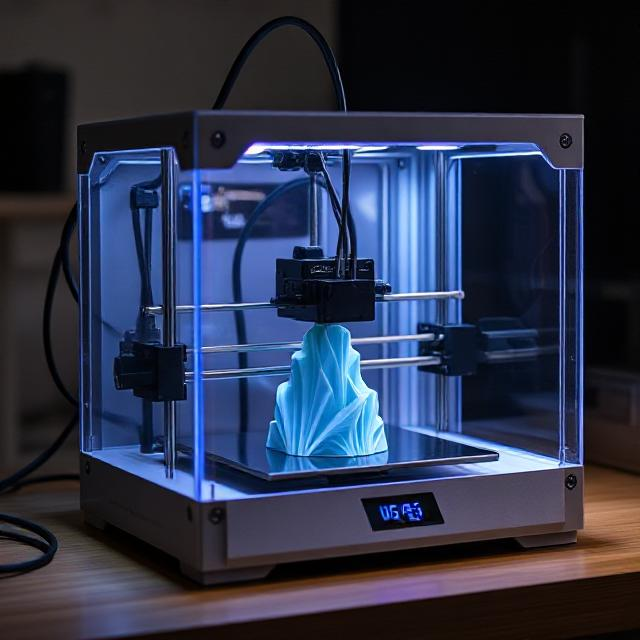What Makes a 3D Printer Great for Printing with Recycled Filament?
If you’ve been diving into the world of 3D printing and are looking to be more sustainable, you’ve probably come across the idea of using recycled filament. It’s a fantastic way to reduce waste, but there are a few key things that a 3D printer needs to make the most out of recycled filament. Let’s talk about what makes a good 3D printer for this purpose because, let’s face it, experimenting with recycled filament can get messy and expensive!
1. Direct Drive Extruder System: A Must-Have for Recycled Filament
First things first, if you’re looking to print with recycled filament, you’ll want a printer with a Direct Drive extruder. This system places the extruder motor directly above the hotend, meaning the filament is pushed straight into the nozzle with minimal distance and resistance. Why does this matter for recycled filament? Well, recycled filaments can often be more inconsistent in diameter and texture compared to virgin filaments. With a Direct Drive setup, your printer has better control over the filament, making it more reliable at pushing through those irregularities.
This direct connection helps reduce the risk of jams and gives you a smoother printing experience, even when working with materials that haven’t been processed to perfection. Trust me, if you try using recycled filament with a Bowden tube (where the filament travels a longer path before reaching the extruder), you might run into more issues like under-extrusion or clogging. So, for the best results, Direct Drive is definitely the way to go.
2. Good Temperature Control: Flexibility in Printing with Different Recycled Materials
As you may already know not all plastics melt at the same temperature, this rule still applies to recycled plastic filaments, which means you’ll need a printer that can handle a range of temperatures. Filament like recycled PLA or PETG might require slightly different settings compared to their virgin counterparts, and some batches of recycled filament can even be more prone to warping or other issues.
A temperature-controlled heated bed and hotend are crucial to maintain print quality. The heated bed helps prevent warping, while the hotend’s temperature needs to be easily adjustable. Ideally, your printer should allow you to fine-tune the nozzle temperature, especially if you’re trying out more experimental recycled filaments.
Look for printers with high-quality thermostats and reliable temperature sensors to ensure consistent and precise control. Most printers now have suitable hotends and bed heating. Not all printers have enclosures that keep the air around the print at a well-controlled temperature, if you are looking for really good temp control I would recommend looking for a printer with a built-in enclosure. This reduces the chances of printing failures—something you really don’t want when experimenting with recycled filament!
3. Affordable, Yet Capable: The Need for Low-Cost, Reliable Printers
One thing you should keep in mind is that experimenting with recycled filament can be hit or miss. It might work perfectly one time, and then fail miserably the next, which is why you’ll want a low-cost printer that won’t break the bank when a print inevitably goes wrong and does some small damage to your printer. Recycled filament may not always have the perfect consistency, and sometimes you’ll need a few tries to dial in the settings.
Low-cost FDM (Fused Deposition Modeling) printers are great for this, as they offer solid performance without the hefty price tag. Look for models that are known for their durability and ease of use. Printers with open-source firmware like the Ender 3 V2 are great options. They offer a good balance of quality and affordability, plus a big community of users for support.
4. Easy Calibration and Maintenance: Keep It Clean!
Because recycled filament can sometimes leave behind bits of impurities, you’ll want a printer that’s easy to maintain and calibrate. Simple features like auto-bed leveling and easy nozzle cleaning can save you a lot of time and effort. You don’t want to be spending hours getting your printer ready for another round of testing, especially when you’re experimenting with recycled materials.
Wrapping Up: Experiment, Learn, and Save the Planet
To sum it up, when looking for a 3D printer that’s great for recycled filament, focus on features like a Direct Drive extruder, temperature control, low-cost options, and ease of maintenance. These qualities help ensure that your prints come out smoothly while also keeping costs low, which is important when you’re figuring out the quirks of recycled filament.
Remember, printing with recycled materials is a journey of trial and error, so it’s important to pick a printer that you won’t mind experimenting with. The best part? By choosing a good printer for recycled filament, you’re doing your part to help reduce waste—and who doesn’t love that?
Happy printing!

